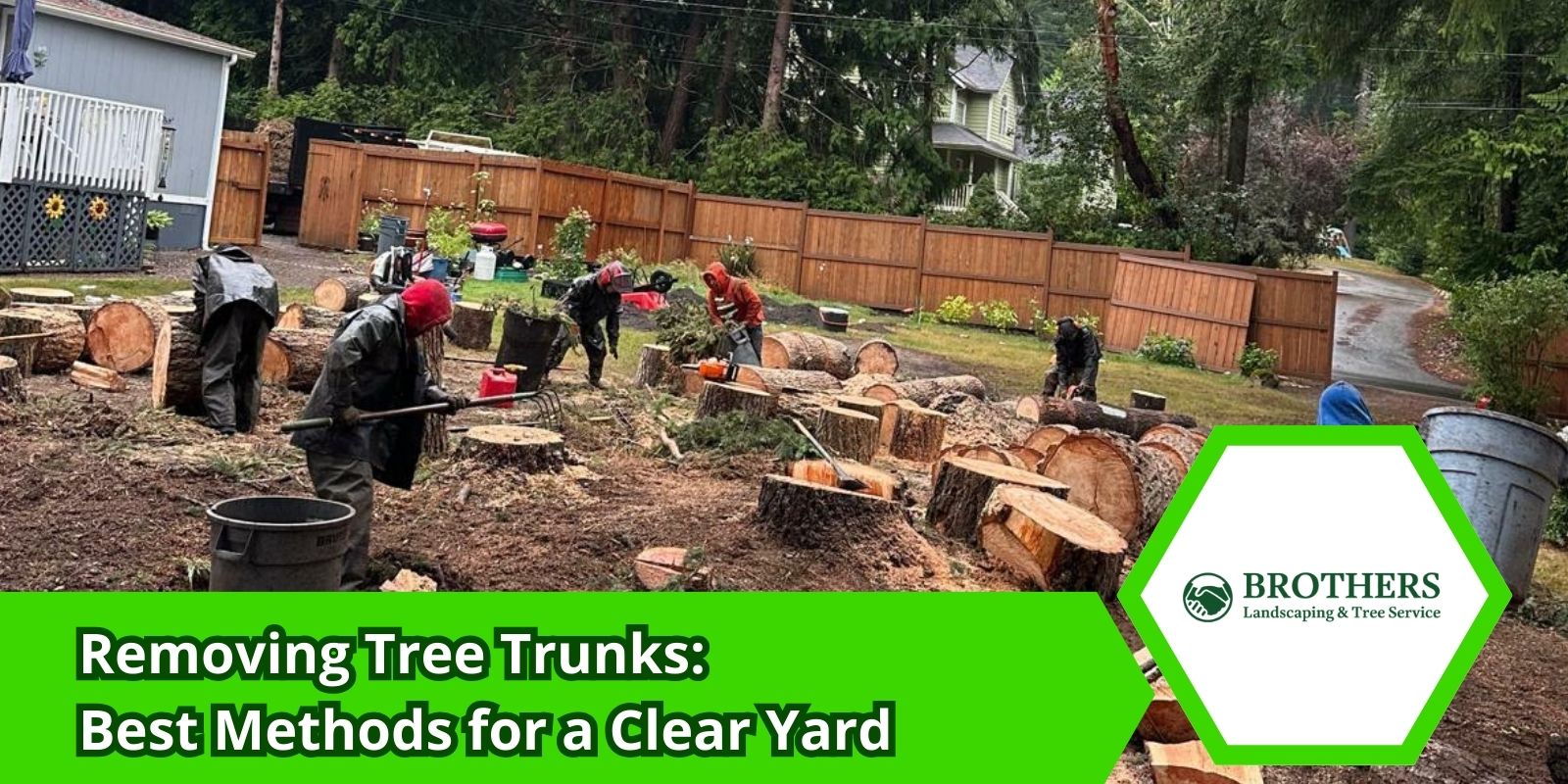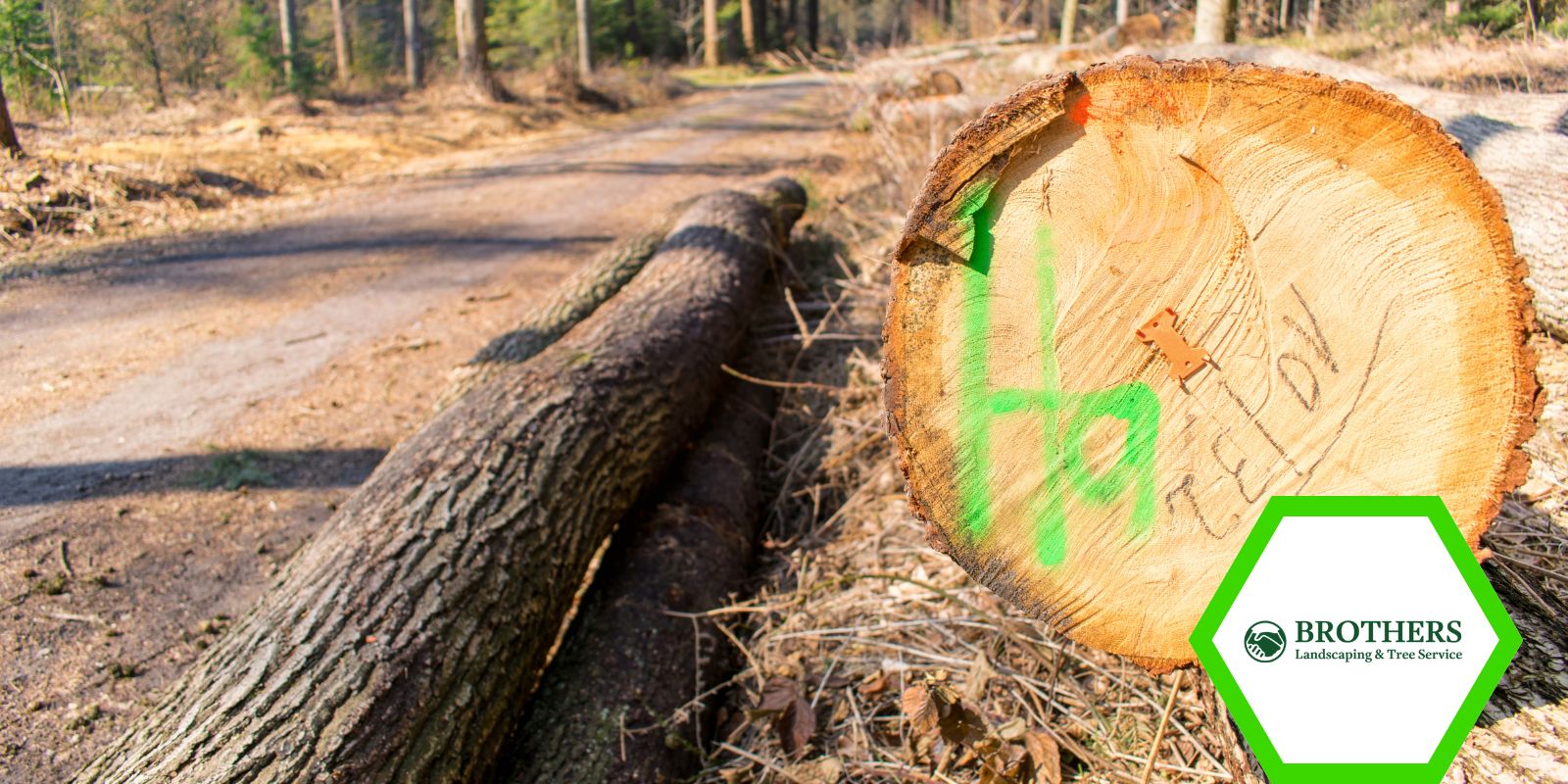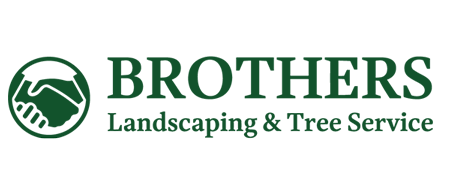
When a tree is cut down, the trunk often remains, making it difficult to use the space. Properly removing tree trunks ensures your yard is clear and free from obstacles. Whether the trunk is small or large, choosing the right removal method will make the process more efficient and prevent long-term issues.
Why Removing Tree Trunks is Important
Leaving a tree trunk in place can cause several issues:
- It takes up valuable yard space.
- It can attract insects and fungi over time.
- It may create uneven ground, making landscaping difficult.
- Some trunks continue to sprout new growth.
Removing tree trunks completely allows for a clean, open space that can be repurposed for new landscaping projects.
Breaking Down a Tree Trunk for Easier Removal
Before removal, breaking the trunk into smaller sections makes the process more manageable.
- Use a chainsaw or handsaw to cut the trunk into smaller pieces.
- Trim any large branches that may still be attached.
- Split thicker sections with a wedge and mallet.
This step makes lifting and transporting the pieces easier without heavy machinery.
Lifting and Transporting the Trunk
Once the trunk is in smaller sections, moving it requires the proper technique.
- Use a pry bar or lever to lift heavy sections.
- Roll the trunk pieces instead of carrying them to reduce strain.
- Ask for assistance if the trunk is too large to move alone.
Proper handling prevents injuries and ensures efficient removal.
What to Do with a Removed Tree Trunk
Once removed, there are several options for repurposing the trunk:
- Turn it into firewood by cutting it into logs.
- Use it for landscaping as a garden border or decorative piece.
- Recycle the wood by chipping it into mulch.
If disposal is necessary, check local guidelines for proper wood waste removal.

When to Hire a Professional for Tree Trunk Removal
Some trunks are too large, heavy, or difficult to remove alone. Professional removal is recommended if:
- The trunk is too thick to cut with standard tools.
- It is in a tight space or near a structure.
- You want a quick and hassle-free process.
Hiring a professional ensures the trunk is removed safely and efficiently.
What Happens After Removing Tree Trunks?
You must remove the trunk before restoring the yard to complete the process.
- Fill the area with fresh soil to prevent uneven ground.
- Replant grass or flowers to enhance the space.
- Remove leftover debris for a clean finish.
These steps ensure your yard is ready for new landscaping projects.
Expert Help for Removing Tree Trunks
We provide safe and efficient solutions if you need help removing tree trunks. We are licensed and insured, with over 10 years of experience. Contact us for a free estimate today.
